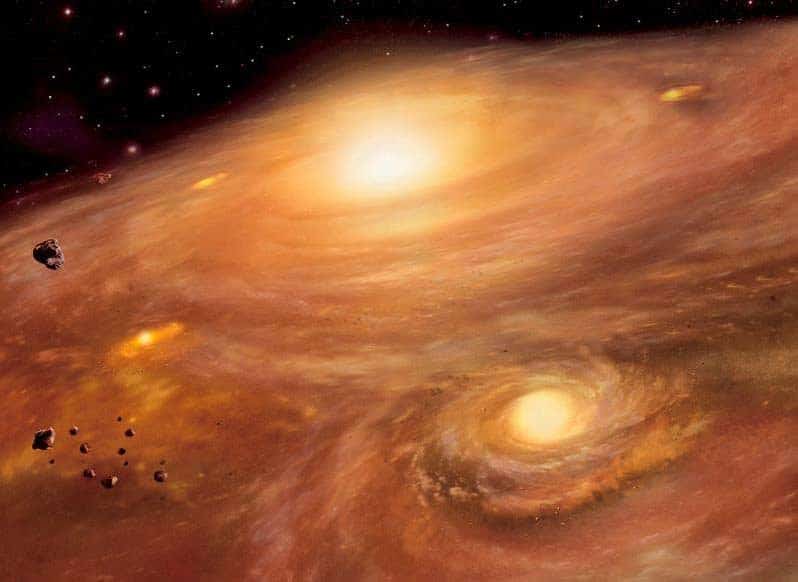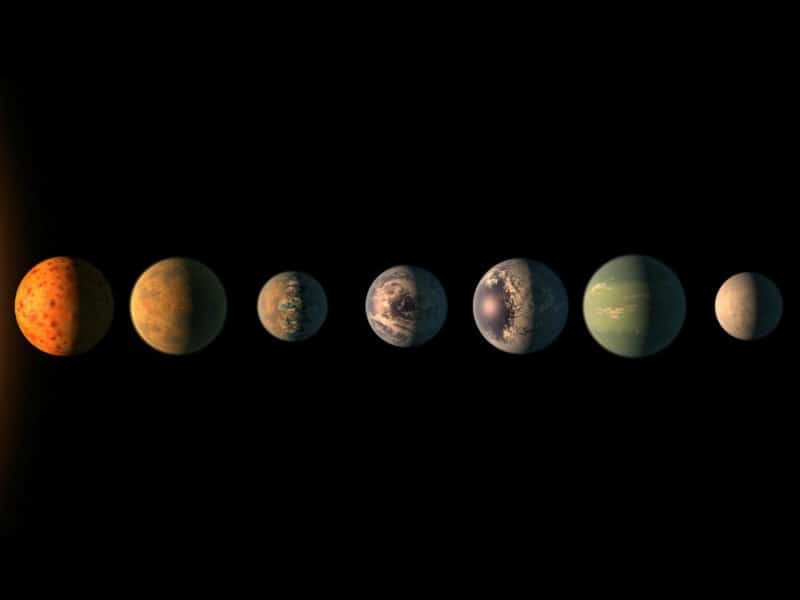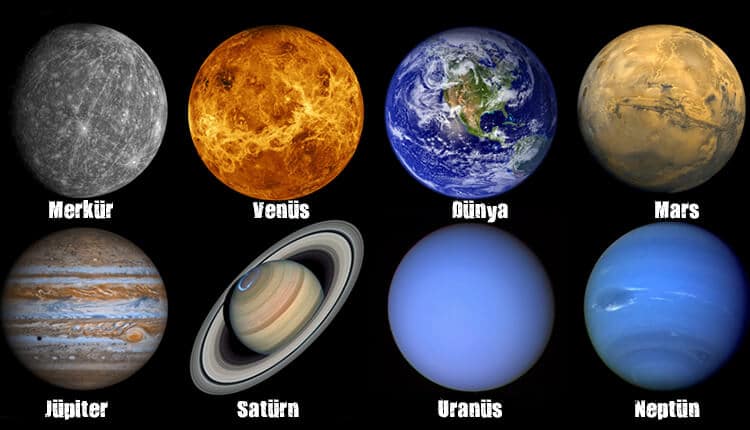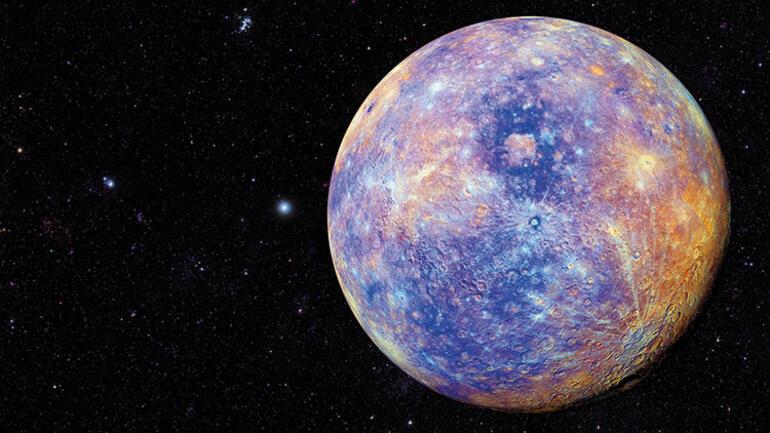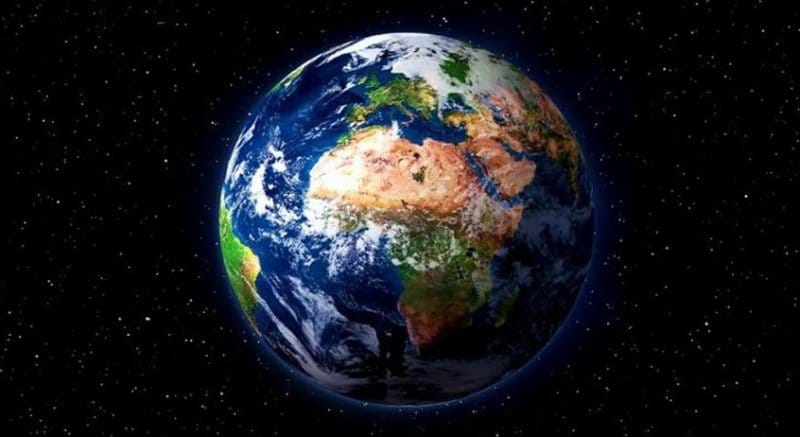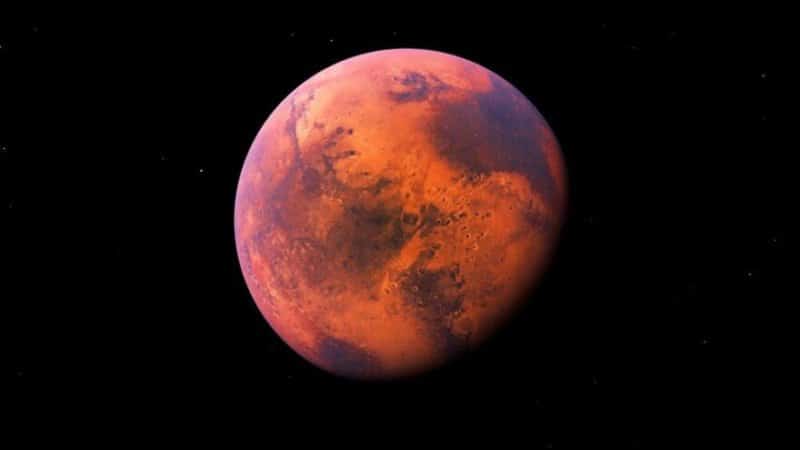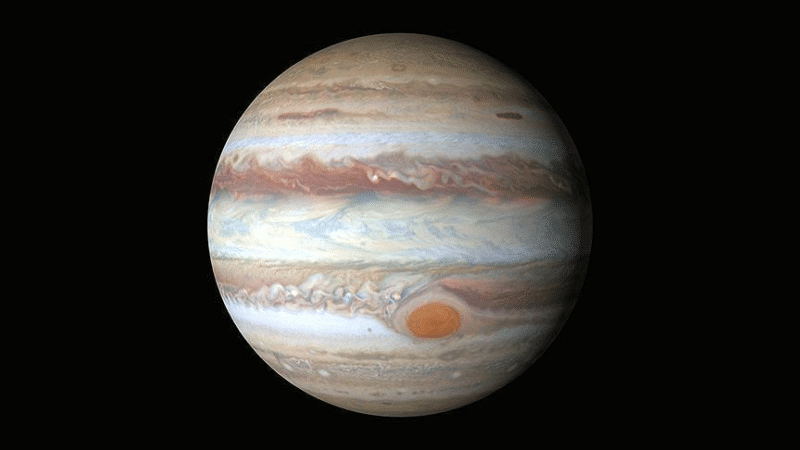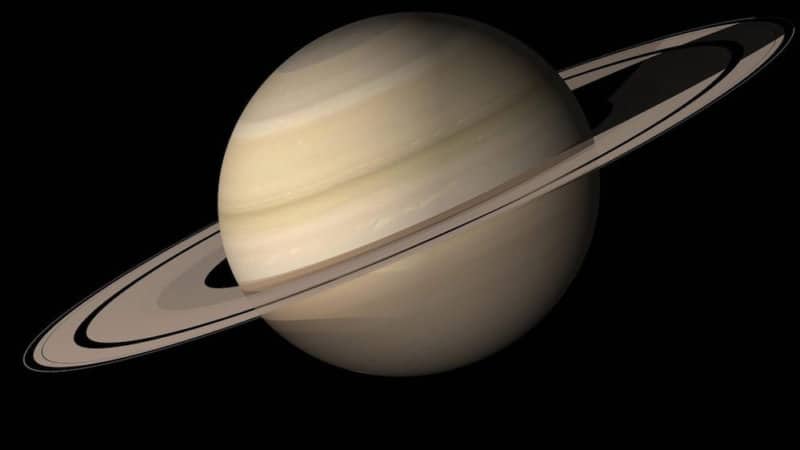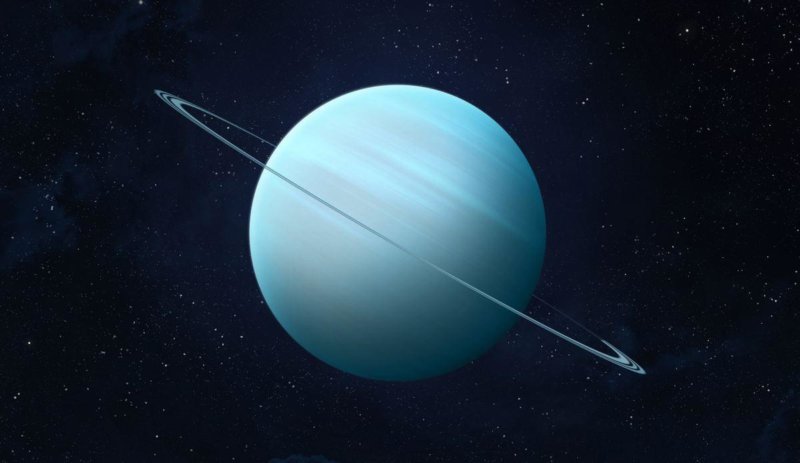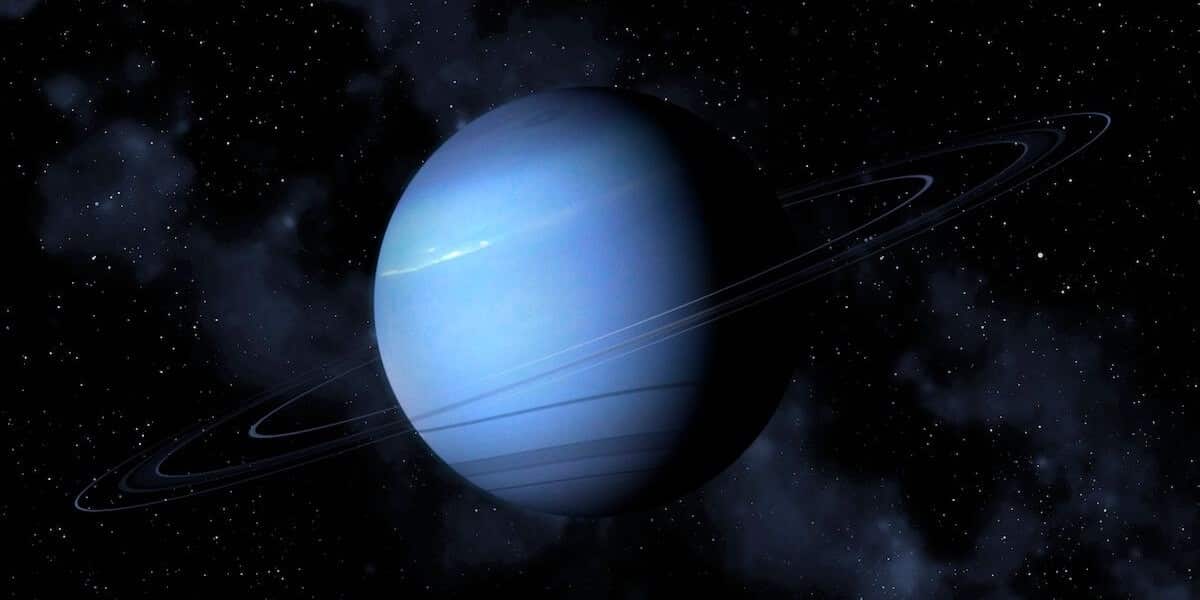The colors of the planets have always been a matter of curiosity because each of them has extraordinary colors. Planets vary in color depending on what they are made of and, in some cases, how their atmospheres absorb and reflect light from the Sun. Mercury, Venus, Mars, Jupiter, Saturn, Uranus, Neptune and Earth. Are you ready to learn about the colors of these planets, all of which have eye-catching colors, and other curious things about them? Let’s start the space adventure!
Formation of Planets
Before moving on to the color of the planets, let’s look at how these planets are formed. The Solar System, as it is known, began life as a vast, swirling cloud of gas and dust that curved without direction or shape in the universe. About 4.6 billion years ago, this massive cloud turned into our Sun. In the process that followed, it revealed the Solar System, complete with eight planets, 181 moons, and numerous asteroids.
The gas and dust cloud revolving around the Sun, cooling down as it rotates; began to form different kinds of solids. Because the temperature was very high near the Sun, relatively longer volatile solids such as ice and ammonia formed where the Sun’s temperature reached relatively low. If we compare the Solar System to a disk; The disc kept spinning. The resulting solids stuck together to form large mass clumps and began to form into planets as we know them today.
Why are the colors of the planets different?
Space missions and scientific advances over the past century have drastically changed the perception of planets, including those closest to and furthest from the Sun. As a result, we can now finally determine the true color of a planet and, more importantly, understand why it looks the way it does. Each planet’s color is determined by what it’s made of and, in some cases, how its atmospheres absorb and reflect light from the Sun.
There are four terrestrial planets with solid rock surfaces.
There are also four planets with a gas surface. It is mostly gray or reddish brown in appearance due to elements such as iron found on the surface of planets with solid terrestrial surfaces. However, the dense atmosphere and thick acid clouds surrounding Venus’ surface are difficult to detect from space. Sulfur in clouds reflects light and gives Venus its distinctive yellow color.
There are eight planets in the solar system.
A similar principle applies when it comes to determining the colors of the four gas giants. The colors of the planets are different from each other. For example, Uranus and Neptune appear blue to us because the methane gas in their atmospheres absorbs red light and only makes them reflect blue. Planets with little or no atmosphere appear in the color of their surfaces. Mercury is a rocky gray, while Mars is a caramel, reddish color. According to their distance from the Sun, they are Mercury, Venus, Earth, Mars, Jupiter, Saturn, Uranus and Neptune. Now let’s see what the planet colors are together.
Mercury: The Smallest Planet in the Solar System
The smallest planet in the Solar System and closest to the Sun, Mercury is only slightly larger than Earth’s Moon. The Sun appears three times larger on Mercury’s surface than when viewed from Earth, and Sunlight is seven times brighter. Despite its proximity to the Sun, it is not the hottest planet in the Solar System. Due to the composition of the rocky surface affected by particles and solar winds, its cratered surface appears grayish-brown. Thanks to its thin atmosphere, there is a gap between temperature changes. What color is Mercury? We hope you got the answer. We continue our list of planets and their colors.
Venus: Second Closest Planet to the Sun
Venus is the second closest planet to the Sun and is Earth’s closest planetary neighbor. It is one of the four terrestrial planets. Since it is similar in size and density, it is mentioned in the literature as Earth’s twin. But there are fundamental structural changes between Venus and Earth. Due to volcanic activities, the surface of Venus was shaped. Its dry and barren land is made up of grayish rocks, but appears from space as thick, swirling yellow and white clouds of sulfuric acid as a result of the planet’s dense atmosphere. The color of Venus is also often described in this way.
Earth: The Only Planet Inhabited by Living Things (As Far As Known)
Although it is the third planet closest to the Sun, it is known as the only planet inhabited by living things. While Earth is the fifth largest planet in the Solar System, it is the only planet in the solar system to have water on its surface in liquid form. Slightly larger than nearby Venus, Earth is the largest of the four planets closest to the Sun, all made of rock and metal. From space it appears as vast blue oceans, green and brown lands and a thick white cloud cover.
Mars: Red Planet
Mars is the fourth farthest planet from the Sun. It is a dusty and cold planet with a very thin atmosphere. Mars is also a dynamic planet with seasons, polar ice caps, canyons, extinct volcanoes, and evidence of even more activity in the past. It is also called the “Red Planet” because of its color caused by the high levels of iron oxide found on the Martian surface. Although dry and dusty, temperatures on Mars are similar to those on Earth, but the planet is also home to powerful dust storms as a result of its thin atmosphere.
Jupiter: The Largest Planet in the Solar System
Known as the gas giant, taking its place in the Solar System as the fifth closest planet to the Sun, Jupiter is by far the largest planet in the Solar System. It is more than twice the combined mass of all other planets. Jupiter’s familiar lines and swirls are actually clouds of cold winds of ammonia and water floating in an atmosphere of hydrogen and helium. Its structure is similar to that of a star, like the sun, mostly composed of hydrogen and helium.
So what color is Jupiter? Ice crystals and other elements help form thick bands of red, brown, yellow, and white clouds that surround the entire planet. Jupiter’s famous Great Red Spot is a massive storm that has raged for hundreds of years, thought to be larger than Earth. The famous Red Spot can also be seen from Earth with telescopes.
Saturn: Second Largest Planet in the Solar System
Saturn is the sixth largest planet in the Sun and the second largest in the Solar System. Adorned with thousands of beautiful curls, Saturn is unique among the planets. It’s not the only planet with rings of ice and rock, but none look as complex and spectacular as Saturn’s.
So what color is Saturn? Like the other gas giant Jupiter, Saturn gives Saturn its distinctive yellowish-brown color, consisting mostly of hydrogen and helium but with traces of ammonia, phosphine, water vapor, and hydrocarbons in its atmosphere. Saturn’s famous rings, composed primarily of water ice, share a similar hue, but their color also changes depending on the density and the presence of other materials.
Uranus: The First Planet Found With the Help of a Telescope
Uranus is the seventh planet closest to the Sun and has the third largest diameter in our solar system.
Uranus, the first planet to be found with the help of a telescope, was discovered by astronomer William Herschel in 1781 but initially thought it was a comet or a star. Two years later, Uranus was universally recognized as a new planet, in part due to observations by astronomer Johann Elert Bode.
The scientific community accepted Herschel’s proposal to name the Greek sky god Uranus, as suggested by Bode. Despite being classified as a gas giant, the planet Uranus is covered by an icy cloud layer. It is the coldest planet in the Solar System. Cloud-level temperatures drop below -220 celsius. Methane in its atmosphere gives Uranus its distinctive turquoise appearance; Red light is absorbed while only green and blue light are reflected.
Neptune: Farthest Planet from the Sun
Dark, cold and whipped by supersonic winds, icy giant Neptune is the eighth planet in the Solar System and the farthest from the Sun. Neptune, 30 times farther from the Sun than Earth, is the first planet in the Solar System that was invisible to the naked eye and first predicted by mathematics before it was discovered. Neptune completed its first 165-year orbit since its discovery in 1846 in 2011.
Neptune, the smallest of the four gas giants, shares many physical similarities with its neighbor Uranus, including its blue color. It is considered the windiest planet with recorded speeds of 2.4141 km per hour. It is known to occur in extreme storms in its atmosphere, and the planet also has a giant storm spot like Jupiter.

